Need Expert Advice?Our Gurus Can Help
Ramalingam Kalirajan |2052 Answers |Ask -Follow
Mutual Funds, Financial Planning Expert - Answered on May 13, 2024
Ramalingam Kalirajan |2052 Answers |Ask -Follow
Mutual Funds, Financial Planning Expert - Answered on May 13, 2024
Ramalingam Kalirajan |2052 Answers |Ask -Follow
Mutual Funds, Financial Planning Expert - Answered on May 13, 2024

Quant Small Cap Fund: Investing in small-cap funds can offer significant growth potential, albeit with higher volatility. Given your existing exposure to real estate and passive income, incorporating small-cap funds can add diversification to your portfolio. However, it's essential to monitor the fund's performance and risk profile regularly.
SBI Contra Fund: Contra funds invest in undervalued stocks with the potential for reversal in market sentiment. While this strategy can yield attractive returns over the long term, it's crucial to assess the fund manager's track record and investment approach. Regular review and adjustment may be necessary to optimize performance.
Motilal Oswal Midcap Fund: Mid-cap funds target companies with medium market capitalization, offering a balance between growth potential and risk. As with small-cap funds, mid-cap investments require a higher risk tolerance due to increased volatility. Ensure adequate diversification across fund categories to mitigate concentration risk.
ICICI Prudential Infrastructure Fund: Infrastructure funds focus on sectors like construction, energy, and transportation, offering exposure to India's infrastructure development. Given the government's emphasis on infrastructure spending, this sector may witness growth opportunities. However, it's essential to monitor sector-specific risks and economic indicators.
ICICI Prudential Bharat 22 Fund & Nifty BeES: These investments provide exposure to diversified equity indices, offering broad market participation. While index funds offer lower expense ratios and passive management, they may lag in capturing potential alpha compared to actively managed funds. Regular review ensures alignment with investment objectives.
To further enhance your mutual fund portfolio:
Consider evaluating your asset allocation to ensure it aligns with your risk tolerance and investment horizon.
Regularly review the performance of individual funds and rebalance your portfolio as necessary to maintain diversification.
Explore additional investment opportunities such as debt funds or thematic funds to further diversify your portfolio and manage risk.
Seek professional guidance from a Certified Financial Planner to develop a comprehensive investment strategy tailored to your financial goals and risk profile.
By continuously monitoring your portfolio's performance and making informed investment decisions, you can optimize returns and achieve your long-term financial objectives.
Best Regards,
K. Ramalingam, MBA, CFP,
Chief Financial Planner,
www.holisticinvestment.in
Ramalingam Kalirajan |2052 Answers |Ask -Follow
Mutual Funds, Financial Planning Expert - Answered on May 13, 2024
Ramalingam Kalirajan |2052 Answers |Ask -Follow
Mutual Funds, Financial Planning Expert - Answered on May 13, 2024
Ramalingam Kalirajan |2052 Answers |Ask -Follow
Mutual Funds, Financial Planning Expert - Answered on May 13, 2024
Ramalingam Kalirajan |2052 Answers |Ask -Follow
Mutual Funds, Financial Planning Expert - Answered on May 13, 2024

Retirement brings a shift in financial priorities, and it's essential to ensure that your retirement benefits are managed effectively to sustain your desired lifestyle. With your retirement benefits totaling around 1 crore, the goal of generating a minimum of 100,000 rupees per month is certainly achievable with careful planning and strategic investment.
Let's delve into crafting a personalized retirement income plan that aligns with your financial goals and aspirations.
Assessing Your Needs:
Understanding your current financial needs and future aspirations is the foundation of any retirement plan. Take some time to reflect on your lifestyle preferences, anticipated expenses, and any specific financial goals you wish to accomplish during retirement. This self-reflection will guide us in designing a customized plan tailored to your unique circumstances.
Creating a Balanced Portfolio:
Diversification is key to managing risk and optimizing returns in retirement. By spreading your retirement benefits across a mix of investment avenues, we can strive for stability, growth, and income generation. We'll explore various asset classes, such as fixed income instruments, equities, and alternative investments, to construct a balanced portfolio that suits your risk tolerance and financial objectives.
Generating Regular Income:
Your objective of generating a minimum of 100,000 rupees per month from retirement benefits requires a strategic approach. We'll focus on income-generating investments, such as fixed deposits, bonds, and dividend-paying stocks or mutual funds. These investments offer regular cash flows that can supplement your retirement income and provide financial stability throughout your retired life.
Managing Withdrawal Strategies:
Systematic Withdrawal Plans (SWPs) from mutual funds can be an effective tool for managing cash flow in retirement. By setting up SWPs, you can establish a regular withdrawal schedule tailored to your income needs while keeping the remaining investment corpus intact for future growth. We'll design a withdrawal strategy that strikes a balance between meeting your short-term income requirements and preserving capital for the long term.
Continued Review and Adjustment:
Retirement planning is not a one-time event but an ongoing process that requires regular review and adjustment. As your financial needs, market conditions, and life circumstances evolve, we'll adapt your retirement income plan accordingly. Through periodic reviews, we'll ensure that your investments remain aligned with your goals and risk tolerance, maximizing the potential for long-term financial success.
Final Thoughts:
Retirement is a significant milestone, and embarking on this journey with a well-thought-out financial plan can set the stage for a fulfilling and worry-free retirement life. Remember, your retirement benefits are a valuable resource that can provide you with the financial freedom to pursue your passions, spend time with loved ones, and explore new experiences.
As a Certified Financial Planner, I'm committed to guiding you every step of the way towards achieving your retirement dreams. Together, we'll create a robust retirement income plan that empowers you to live life on your terms, with confidence and peace of mind.
Best Regards,
K. Ramalingam, MBA, CFP,
Chief Financial Planner,
www.holisticinvestment.in
Let's embark on this financial journey together.
You can reach me through my website mentioned-below.
This platform has restrictions to share the personal contact. Hope you understand.
Best Regards,
K. Ramalingam, MBA, CFP,
Chief Financial Planner,
www.holisticinvestment.in
Ramalingam Kalirajan |2052 Answers |Ask -Follow
Mutual Funds, Financial Planning Expert - Answered on May 13, 2024
Ramalingam Kalirajan |2052 Answers |Ask -Follow
Mutual Funds, Financial Planning Expert - Answered on May 13, 2024
Ramalingam Kalirajan |2052 Answers |Ask -Follow
Mutual Funds, Financial Planning Expert - Answered on May 13, 2024
Ramalingam Kalirajan |2052 Answers |Ask -Follow
Mutual Funds, Financial Planning Expert - Answered on May 13, 2024
Ramalingam Kalirajan |2052 Answers |Ask -Follow
Mutual Funds, Financial Planning Expert - Answered on May 13, 2024
Ramalingam Kalirajan |2052 Answers |Ask -Follow
Mutual Funds, Financial Planning Expert - Answered on May 12, 2024
Ramalingam Kalirajan |2052 Answers |Ask -Follow
Mutual Funds, Financial Planning Expert - Answered on May 12, 2024
Ramalingam Kalirajan |2052 Answers |Ask -Follow
Mutual Funds, Financial Planning Expert - Answered on May 12, 2024
Ramalingam Kalirajan |2052 Answers |Ask -Follow
Mutual Funds, Financial Planning Expert - Answered on May 12, 2024
Ramalingam Kalirajan |2052 Answers |Ask -Follow
Mutual Funds, Financial Planning Expert - Answered on May 12, 2024
Ramalingam Kalirajan |2052 Answers |Ask -Follow
Mutual Funds, Financial Planning Expert - Answered on May 12, 2024
Ramalingam Kalirajan |2052 Answers |Ask -Follow
Mutual Funds, Financial Planning Expert - Answered on May 12, 2024
Ramalingam Kalirajan |2052 Answers |Ask -Follow
Mutual Funds, Financial Planning Expert - Answered on May 12, 2024
Ramalingam Kalirajan |2052 Answers |Ask -Follow
Mutual Funds, Financial Planning Expert - Answered on May 12, 2024
Ramalingam Kalirajan |2052 Answers |Ask -Follow
Mutual Funds, Financial Planning Expert - Answered on May 12, 2024
Ramalingam Kalirajan |2052 Answers |Ask -Follow
Mutual Funds, Financial Planning Expert - Answered on May 12, 2024
Ramalingam Kalirajan |2052 Answers |Ask -Follow
Mutual Funds, Financial Planning Expert - Answered on May 12, 2024
Ramalingam Kalirajan |2052 Answers |Ask -Follow
Mutual Funds, Financial Planning Expert - Answered on May 12, 2024
Ramalingam Kalirajan |2052 Answers |Ask -Follow
Mutual Funds, Financial Planning Expert - Answered on May 12, 2024
Ramalingam Kalirajan |2052 Answers |Ask -Follow
Mutual Funds, Financial Planning Expert - Answered on May 12, 2024
Ramalingam Kalirajan |2052 Answers |Ask -Follow
Mutual Funds, Financial Planning Expert - Answered on May 12, 2024
Ramalingam Kalirajan |2052 Answers |Ask -Follow
Mutual Funds, Financial Planning Expert - Answered on May 12, 2024
Ramalingam Kalirajan |2052 Answers |Ask -Follow
Mutual Funds, Financial Planning Expert - Answered on May 12, 2024
Ramalingam Kalirajan |2052 Answers |Ask -Follow
Mutual Funds, Financial Planning Expert - Answered on May 12, 2024
Ramalingam Kalirajan |2052 Answers |Ask -Follow
Mutual Funds, Financial Planning Expert - Answered on May 12, 2024
Ramalingam Kalirajan |2052 Answers |Ask -Follow
Mutual Funds, Financial Planning Expert - Answered on May 12, 2024
Ramalingam Kalirajan |2052 Answers |Ask -Follow
Mutual Funds, Financial Planning Expert - Answered on May 12, 2024
Ramalingam Kalirajan |2052 Answers |Ask -Follow
Mutual Funds, Financial Planning Expert - Answered on May 12, 2024
Ramalingam Kalirajan |2052 Answers |Ask -Follow
Mutual Funds, Financial Planning Expert - Answered on May 12, 2024
Ramalingam Kalirajan |2052 Answers |Ask -Follow
Mutual Funds, Financial Planning Expert - Answered on May 12, 2024
Ramalingam Kalirajan |2052 Answers |Ask -Follow
Mutual Funds, Financial Planning Expert - Answered on May 12, 2024
Ramalingam Kalirajan |2052 Answers |Ask -Follow
Mutual Funds, Financial Planning Expert - Answered on May 12, 2024
Ramalingam Kalirajan |2052 Answers |Ask -Follow
Mutual Funds, Financial Planning Expert - Answered on May 12, 2024
Ramalingam Kalirajan |2052 Answers |Ask -Follow
Mutual Funds, Financial Planning Expert - Answered on May 12, 2024
Ramalingam Kalirajan |2052 Answers |Ask -Follow
Mutual Funds, Financial Planning Expert - Answered on May 12, 2024
Ramalingam Kalirajan |2052 Answers |Ask -Follow
Mutual Funds, Financial Planning Expert - Answered on May 12, 2024
Ramalingam Kalirajan |2052 Answers |Ask -Follow
Mutual Funds, Financial Planning Expert - Answered on May 12, 2024
Ramalingam Kalirajan |2052 Answers |Ask -Follow
Mutual Funds, Financial Planning Expert - Answered on May 12, 2024
Ramalingam Kalirajan |2052 Answers |Ask -Follow
Mutual Funds, Financial Planning Expert - Answered on May 12, 2024
Ramalingam Kalirajan |2052 Answers |Ask -Follow
Mutual Funds, Financial Planning Expert - Answered on May 12, 2024
Ramalingam Kalirajan |2052 Answers |Ask -Follow
Mutual Funds, Financial Planning Expert - Answered on May 12, 2024
Ramalingam Kalirajan |2052 Answers |Ask -Follow
Mutual Funds, Financial Planning Expert - Answered on May 12, 2024
Ramalingam Kalirajan |2052 Answers |Ask -Follow
Mutual Funds, Financial Planning Expert - Answered on May 12, 2024
Close







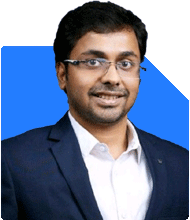


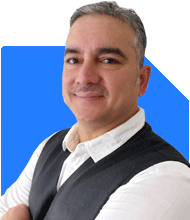


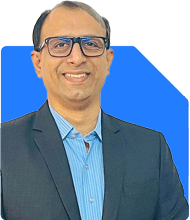
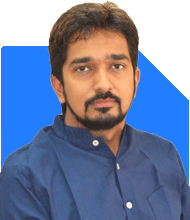


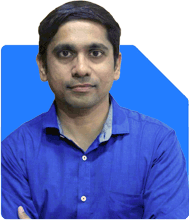

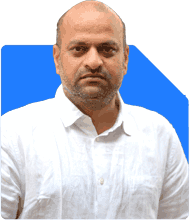
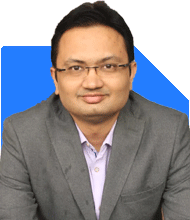
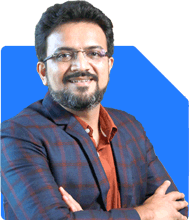
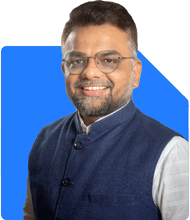








.jpg)





















.jpg)






